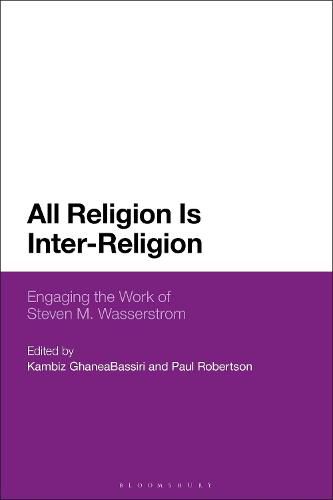Readings Newsletter
Become a Readings Member to make your shopping experience even easier.
Sign in or sign up for free!
You’re not far away from qualifying for FREE standard shipping within Australia
You’ve qualified for FREE standard shipping within Australia
The cart is loading…






All Religion Is Inter-Religion analyses the ways inter-religious relations have contributed both historically and philosophically to the constructions of the category of religion as a distinct subject of study.
Regarded as contemporary classics, Steven M. Wasserstrom’s Religion after Religion (1999) and Between Muslim and Jew (1995) provided a theoretical reorientation for the study of religion away from hierophanies and ultimacy, and toward lived history and deep pluralism. This book distills and systematizes this reorientation into nine theses on the study of religion.
Drawing on these theses–and Wasserstrom’s opus more generally–a distinguished group of his colleagues and former students demonstrate that religions can, and must, be understood through encounters in real time and space, through the complex relations they create and maintain between people, and between people and their pasts. The book also features an afterword by Wasserstrom himself, which poses nine riddles to students of religion based on his personal experiences working on religion at the turn of the twenty-first century.
$9.00 standard shipping within Australia
FREE standard shipping within Australia for orders over $100.00
Express & International shipping calculated at checkout
All Religion Is Inter-Religion analyses the ways inter-religious relations have contributed both historically and philosophically to the constructions of the category of religion as a distinct subject of study.
Regarded as contemporary classics, Steven M. Wasserstrom’s Religion after Religion (1999) and Between Muslim and Jew (1995) provided a theoretical reorientation for the study of religion away from hierophanies and ultimacy, and toward lived history and deep pluralism. This book distills and systematizes this reorientation into nine theses on the study of religion.
Drawing on these theses–and Wasserstrom’s opus more generally–a distinguished group of his colleagues and former students demonstrate that religions can, and must, be understood through encounters in real time and space, through the complex relations they create and maintain between people, and between people and their pasts. The book also features an afterword by Wasserstrom himself, which poses nine riddles to students of religion based on his personal experiences working on religion at the turn of the twenty-first century.